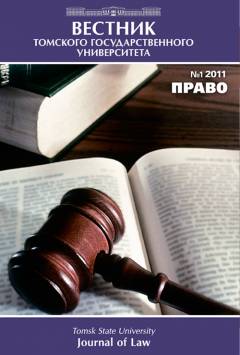Definition of mass riots in Russian criminal laws
The chapter 24 of the Criminal Code of the Russian Federation is devoted to crimes against public security. Articles of this chapter represent enough effectual instruments of criminal protection of public interests and protection of a person as well. However, studying of some articles of the chapter 24 of the Criminal Code and practice of its applying show the necessity to improve prohibitions, provided by it. For example, article 212 of the Criminal Code of the Russian Federation, despite verbalism, doesn't give a strict idea on content of the subject of crime, provided by it. Literal interpretation of the expression "mass disorder, leading with violence, demolition and arson." allows to confirm, that subject of crime of mass disorder supposes such elements as mass disorder, violence and other actions, provided by p.1 art.212 of the Criminal Code of the Russian Federation, which are followed by mass disorder, completed by them, committed simultaneously. Part 3 of the article 212 of the Criminal Code of the Russian Federation gives the same idea, it provides punishment not only for riotous statements in mass disorder or participation in it, but for calls to violence. But what we should refer to mass disorder, which is a part of objective aspect of a crime along with riotous behavior of a crowd (violence use, arsons, demolition and so on), is anyone's guess. However, the title of the article, its purpose, content of criminal prohibition suggest that objective aspect of crime "mass disorder" includes one systematic element, which is committing demolition, arsons, violence use towards citizens by a great number of people (by a crowd). It makes sense to improve text of the article 212 of the Criminal Code of the Russian Federation. Within the meaning of crime mentioned in it, emphasis should be turned to aggressive actions of a crowd, because they form public danger of this action. Exactly these actions (violence use , arsons, demolition and so on) are caused damages to public relations, which provide security of life, health, property of a single person or a number of people, activity of state authority and government, functioning of organizations and enterprises. To define the notion of mass disorder it is enough to point out the essence of this action in the Criminal Code of the Russian Federation - the committing of some public dangerous actions by participants of the crowd. It is necessary to eliminate ineffectual stylistically and semantic expression "mass disorder, accompanying ..." from the definition. Instead of it we should use a formula: "mass disorder - violence use towards a person, arsons, demolition and damage of property". It is necessary to abandon repetitions in description of the objective aspect of mass disorder. It is obvious, that the notion "use of weapon" has a lot in common with the notion "provision of armed resistance to public authority" (it is generic term towards the latter); calling to violence towards citizens in context of the article 212 of the Criminal Code of the Russian Federation represent itself call to mass disorder.
Keywords
public safety, mass disorder, violence use to a person, arsons, demolition of property, context of the criminal norm, improvement of criminal legislationAuthors
| Name | Organization | |
| Eliseev Sergey A. | Tomsk State University |
References

Definition of mass riots in Russian criminal laws | Tomsk State University Journal of Law. 2020. № 38. DOI: 10.17223/22253513/38/4
